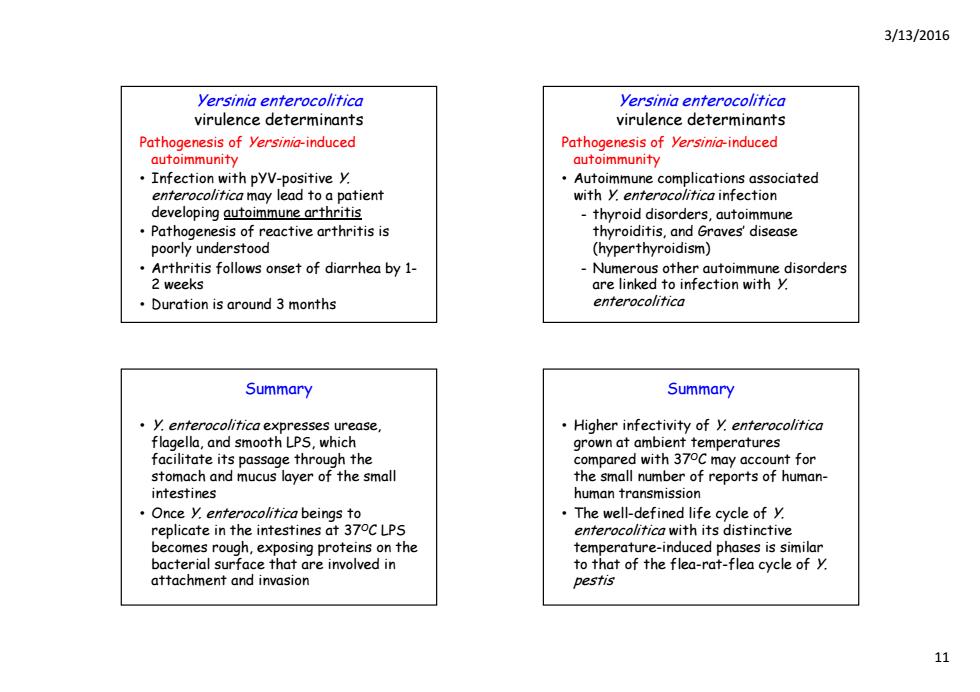正在加载图片...

3/13/2016 yersinia enterocolitica yersinia enterocolitica virulence determinants virulence determinants Pathogenesis of yersinia-induced Pathogenesis of yersinia-induced autoimmunity autoimmunity Infection with pyV-positive y. Autoimmune complications associated enterocolitica may lead to a patient with y.enterocolitica infection developing autoimmune arthritis -thyroid disorders,autoimmune Pathogenesis of reactive arthritis is thyroiditis,and Graves'disease poorly understood (hyperthyroidism) Arthritis follows onset of diarrhea by 1- Numerous other autoimmune disorders 2 weeks are linked to infection with y. Duration is around 3 months enterocolitica Summary Summary y.enterocolitica expresses urease. Higher infectivity of y.enterocolitica flagella,and smooth LPS,which grown at ambient temperatures facilitate its passage through the compared with 370C may account for stomach and mucus layer of the small the small number of reports of human- intestines human transmission Once y.enterocolitica beings to The well-defined life cycle of y. replicate in the intestines at 370C LPS enterocolitica with its distinctive becomes rough,exposing proteins on the temperature-induced phases is similar bacterial surface that are involved in to that of the flea-rat-flea cycle of y. attachment and invasion pestis 11 3/13/2016 11 Yersinia enterocolitica virulence determinants Pathogenesis of Yersinia-induced autoimmunity • Infection with pYV-positive Y. enterocolitica may lead to a patient developing autoimmune arthritis • Pathogenesis of reactive arthritis is poorl d t d ly understood • Arthritis follows onset of diarrhea by 1- 2 weeks • Duration is around 3 months Yersinia enterocolitica virulence determinants Pathogenesis of Yersinia-induced autoimmunity • Autoimmune complications associated with Y. enterocolitica infection - thyroid disorders, autoimmune thyroiditis, and Graves’ disease (h th idi ) (hyperthyroidism) - Numerous other autoimmune disorders are linked to infection with Y. enterocolitica Summary • Y. enterocolitica expresses urease, flagella, and smooth L flagella, and smooth L S, wh ch PS, which facilitate its passage through the stomach and mucus layer of the small intestines • Once Y. enterocolitica beings to repli t i th i t ti t 37 licate in the intestines at 37OC LPS becomes rough, exposing proteins on the bacterial surface that are involved in attachment and invasion Summary • Higher infectivity of Y. enterocolitica grown at amb grown at amb ent temperatures ient temperatures compared with 37OC may account for the small number of reports of humanhuman transmission • The well-defined life cycle of Y. ent liti erocolitica with it di ti ti ith its distinctive temperature-induced phases is similar to that of the flea-rat-flea cycle of Y. pestis